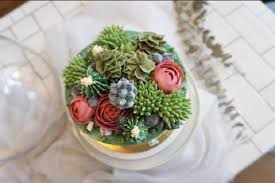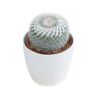Chinese Porcelain with Symbols of Wealth: The Art and Significance of Prosperity in Ceramics

Chinese porcelain has long been celebrated for its intricate designs, vibrant colors, and delicate craftsmanship. For centuries, porcelain has been more than just a medium for creating functional objects; it has also been a canvas for the expression of cultural beliefs and symbolism. Among the many symbols that adorn Chinese porcelain, wealth and prosperity are among the most commonly represented themes. These symbols not only embody the hopes and aspirations of the people but also serve as tools for attracting positive energy and good fortune, particularly in the realm of financial success.
In this article, we will explore the history of Chinese porcelain, the symbolism of wealth in Chinese culture, and how these symbols are incorporated into ceramic art. We will also examine how these works of art can be used in modern times to enhance prosperity, success, and abundance in various aspects of life, including home decor, business settings, and personal life.
1. The History of Chinese Porcelain: A Journey of Craftsmanship
Chinese porcelain, often referred to as china in the West, is considered one of the most significant contributions of Chinese civilization to the world. The art of porcelain-making dates back to the Tang Dynasty (618–907 AD), but it was during the Song Dynasty (960–1279 AD) that it truly flourished. The process of creating porcelain involves a delicate balance of high-quality clay, precise kiln temperatures, and skilled artistry.
The glaze, design, and shapes of porcelain pieces are all crucial elements that contribute to their beauty and cultural significance. Porcelain was used for a variety of purposes, including fine tableware, decorative objects, and ceremonial pieces. Over the centuries, Chinese porcelain has been admired globally for its ability to capture the essence of Chinese culture and its artistry in conveying complex themes through symbolic motifs.
The materials used to make Chinese porcelain, primarily kaolin clay, give it a characteristic smooth texture and delicate appearance. Early porcelain wares were often decorated with simple yet beautiful designs, while later periods saw increasingly intricate artwork featuring not only natural themes like flowers and animals but also symbols of wealth, prosperity, and good fortune.
2. Symbolism of Wealth and Prosperity in Chinese Culture
In Chinese culture, the concept of wealth is not solely about material gain but also about abundance, success, and the flourishing of life. Various symbols have been used throughout history to represent these ideas, and they are often incorporated into art, jewelry, and even architecture. In the context of Chinese porcelain, these symbols have become a powerful means of attracting prosperity, good luck, and fortune.
a. The Chinese Dragon: A Symbol of Power and Wealth
The dragon is one of the most iconic symbols in Chinese culture, representing strength, power, and wealth. In Chinese mythology, the dragon is often depicted as a celestial creature that controls the waters, brings rain, and is associated with imperial authority and good fortune. As a symbol of wealth, the dragon is believed to bring prosperity and success, particularly in business and leadership.
Chinese porcelain often features dragons coiled around clouds or peeking out from waves, conveying the notion of a dragon’s power to control the forces of nature. These designs are often seen in vases, plates, and ceremonial pieces, with the belief that owning or displaying such items will bring financial success and prosperity.
b. The Phoenix: A Symbol of Rebirth and Abundance
The phoenix is another important symbol in Chinese culture, representing rebirth, immortality, and abundance. In ancient China, the phoenix was believed to bring good fortune and happiness, and it is often paired with the dragon in artwork. Together, the dragon and phoenix symbolize the perfect balance of masculine and feminine energies, bringing both power and prosperity to those who possess them.
Porcelain pieces adorned with the image of the phoenix are commonly used in homes and businesses to attract wealth, success, and harmony. The phoenix is often depicted in bright colors like red, gold, and purple, which are associated with good fortune and material wealth.
c. The Chinese Coin: A Symbol of Money and Financial Prosperity
The Chinese coin, often referred to as the cash coin, is a classic symbol of financial prosperity. The coins, typically round with a square hole in the middle, are believed to attract wealth and good fortune. They are often depicted in groups or strung together to symbolize the flow of money and abundance.
In Chinese porcelain, the coin motif can be found on a variety of objects, including vases, plates, and figurines. The image of coins is often paired with other symbols, such as the peach (representing longevity) or the bamboo (symbolizing strength and resilience), to enhance its power to attract wealth and success.
d. The Peach: A Symbol of Immortality and Longevity
The peach is another popular symbol used in Chinese porcelain, often associated with longevity and immortality. While it is not directly linked to wealth in the traditional sense, the peach is still considered a symbol of abundance and success, as it represents a long life filled with prosperity and vitality.
In porcelain art, the peach is often depicted alongside other auspicious symbols like the bamboo or lotus flower, further enhancing its connection to positive energy and prosperity. A peach-shaped vase or a ceramic peach ornament can bring an aura of good fortune and longevity to a space.
e. The Bat: A Symbol of Good Luck
In Chinese culture, the bat (known as “fu” in Chinese) is considered a symbol of good luck and happiness. The word for bat in Chinese sounds similar to the word for good fortune, making it a lucky symbol in the eyes of the Chinese people. The bat is often paired with the character for happiness (“fu”) to signify luck and prosperity.
Porcelain pieces featuring bats are considered particularly lucky, especially when used in conjunction with other symbols like the dragon, phoenix, or coins. These motifs are often found on plates, cups, and ceramic tiles used in homes, offices, and businesses.
3. Porcelain as a Tool for Attracting Wealth in the Modern World
In contemporary times, the practice of using symbols of prosperity and good fortune is still prevalent, especially in the design of home decor and business spaces. Chinese porcelain pieces, adorned with these symbols, continue to be sought after for their aesthetic value as well as their spiritual significance. They are believed to help attract wealth, success, and abundance, making them popular gifts for business openings, weddings, and other important life events.
a. Feng Shui and the Use of Chinese Porcelain
In the practice of feng shui, the placement of objects in a space is believed to influence the flow of energy, or Chi. Certain Chinese porcelain items, such as vases with dragon or phoenix motifs, are strategically placed in specific areas of the home or office to enhance the flow of positive energy and attract prosperity. For example, placing a dragon vase in the east or southeast sector of the home is thought to enhance financial success.
Porcelain figurines featuring symbols like the bat, peach, or coins are also used in feng shui to enhance specific areas of life, such as career, relationships, or health. These items serve as reminders of the qualities they represent, continuously influencing the energy of the space.
b. Porcelain as a Corporate Gift
In business, giving a porcelain item adorned with symbols of prosperity is a thoughtful and meaningful gesture. Porcelain vases, plates, and figurines featuring dragons, coins, or phoenixes are often given as gifts to business partners, clients, and employees as a way to wish them good fortune and success. These gifts are seen as a reflection of the giver’s appreciation and a means of fostering goodwill.
c. Porcelain for Personal Prosperity
For individuals, owning or displaying Chinese porcelain with symbols of wealth can serve as a constant reminder of their aspirations for success. Whether it’s a dragon vase placed in the living room or a peach blossom plate displayed in the office, these items can enhance the energy of the space and attract positive outcomes in one’s personal and professional life.
4. Conclusion
Chinese porcelain, with its rich history and symbolic motifs, remains a powerful tool for attracting wealth, prosperity, and good fortune. The use of dragons, phoenixes, coins, bats, and other symbols in porcelain art reflects the deep cultural belief that certain images can influence one’s fate and bring about positive change. In modern times, these porcelain pieces continue to be cherished for both their aesthetic beauty and their ability to enhance the flow of positive energy. Whether displayed in the home or used as a corporate gift, Chinese porcelain with symbols of wealth remains a timeless and meaningful way to invite prosperity into our lives.

